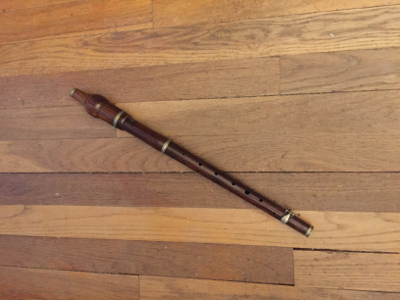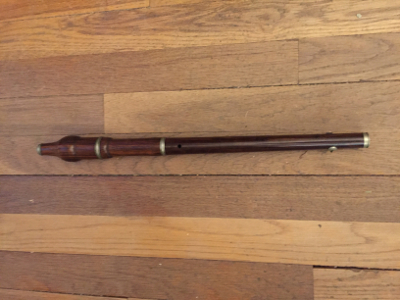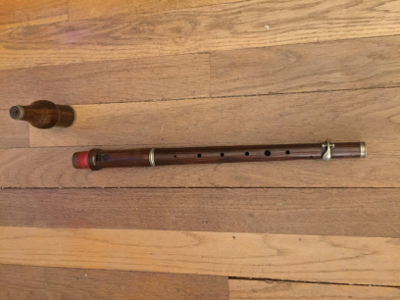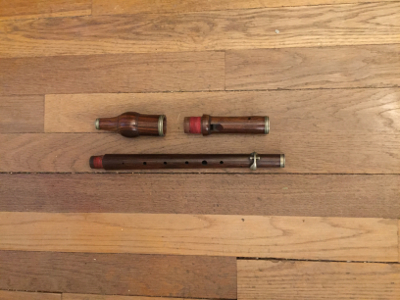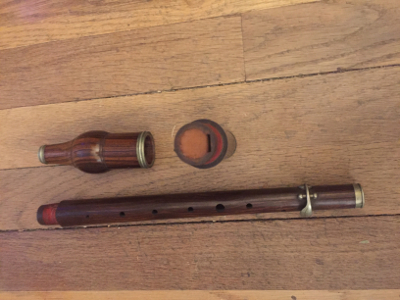
bout the Flageolet
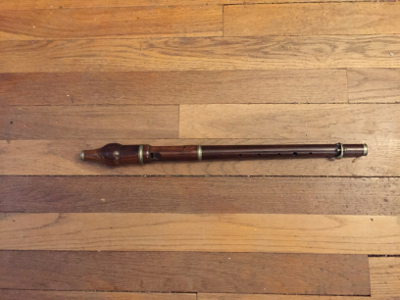 The flageolet was invented in 16th century France.
It is very similar to the recorder in that they are both fipple flutes.
Flageolets have a wind cap above the fipple. They also typically have an ivory mouthpiece that attaches to the cap, which naturally is more durable than wood. Ironically, despite its durability, these mouthpieces were commonly lost, as is the case with the instrument that is pictured here.
The flageolet was invented in 16th century France.
It is very similar to the recorder in that they are both fipple flutes.
Flageolets have a wind cap above the fipple. They also typically have an ivory mouthpiece that attaches to the cap, which naturally is more durable than wood. Ironically, despite its durability, these mouthpieces were commonly lost, as is the case with the instrument that is pictured here.
French flageolets typically had four fingerholes on the front of the instrument and two holes on the rear. English flageolets had six fingerholes on the front of the instrument. In this way they may be seen as being similar to six hole whistles. They sometimes had a seventh hole on the rear of the instrument. Flageolets remained a niche instrument into the ninteenth century. Since the Renaissance, the instrument evolved with the addition of keys.
Flageolets with two bores that exit the windcap were common, and are known as double flageolets. Triple flageolets, with three bores, were much less common than the double bore versions.
Pictured here is flageolet by an anonymous maker. It appears to be made of rosewood. I believe that it dates back to the late 19th or early 20th century. One of our members said it had been in her family for a very long time, and it was sitting around collecting dust.


Page Design Copyright 2010 Michael Berger
Clip Art Copyright 2002 Dover Publications

